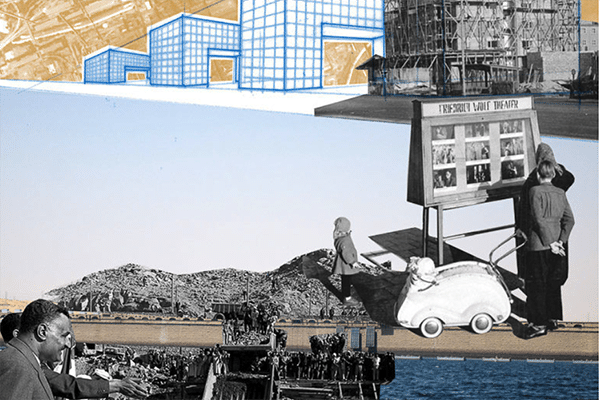The art in this dossier pays homage to the developmental aspirations of nations and peoples of the Third World. Largely from the 1950s to 1970s, each project—a dam, railway, steel plant, housing block, government building, or stadium—represents a vision of the future built from the ruins of centuries of colonial theft and systematic underdevelopment. The sequence of the images in this dossier follows the process of realising a project, from sketching, planning, modelling, constructing, and inaugurating to its final use by its intended public. In each collage, we have incorporated historical photographs, overlaid with grids—a kind of architectural canvas on which new constructions for the unfinished project of national liberation can be imagined.
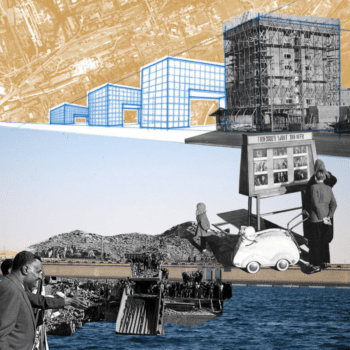
1. Referenced projects include: The Aswan High Dam in the Nile River built in the 1960s and 1970s in Egypt during Gamal Abdel Nasser’s presidency, the Bhilai Steel Plant in Chhattisgarh, India completed under Jawaharlal Nehru’s presidency with the Soviet Union’s assistance in 1959, and the Eisenhüttenstadt high-rise housing project in the German Democratic Republic, completed in 1959.
Note: Last year, Tricontinental: Institute for Social Research and Dongsheng began a conversation with the editors of Wenhua Zongheng (文化纵横). This partnership led to the production of a quarterly international edition of the journal which features select essays from the Chinese edition translated into English, Portuguese, and Spanish, as well as the addition of a new column in the Chinese edition which brings voices from Africa, Asia, and Latin America into dialogue with China. An earlier version of this dossier, 重振社会主义发展理论的必要, was originally published in the April issue of Wenhua Zongheng’s Chinese edition.
Across the world, evidence of human misery is increasingly easy to find. The data collected and reported by international agencies is stunning. Billions of people around the planet lack access to adequate education, healthcare, food, and shelter, as well as information and culture. No one denies these facts, which are collected each year by governments and United Nations agencies.
Disagreements arise around what to do about these obstinate facts, these enduring conditions of suffering. Old but persistent ideas, born in pre-democratic times and in an era of scarcity, insist that people are in misery because of fate or due to some other religious sanction, because people are lazy, or because there are simply not enough resources. All of these arguments are erroneous. It is simply illogical to assume that fate or religious sanction have delivered generation after generation of working-class families to the same conditions, and it is factually incorrect to say that workers who toil for more than half the day and yet barely survive are lazy. All the evidence indicates that despite the wretched conditions facing the majority of the world’s population, resources are in abundance. For instance, we produce enough food to feed 14 billion people—nearly double the amount needed to feed the current world population of 8 billion.1 Meanwhile, the number of undernourished people in the world increased to 828 million in 2022, including a record-high 349 million people facing acute food insecurity.2 These pre-democratic ideas—fatalist and neo-Malthusian justifications for the state of the world—are based on illusions rather than facts, yet they remain a fixture in intellectual and political discourse.
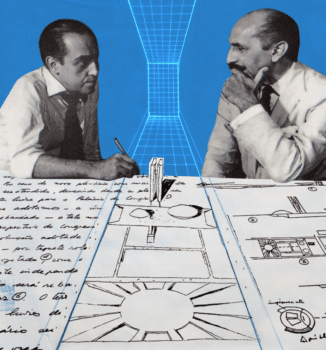
2. The expansive Brazilian capital of Brasilia, one of the most ambitious metropolis projects in Latin America, was inaugurated in 1960 during Juscelino Kubitschek’s presidency after just four years of construction. Built from scratch, the city was designed by the urban planner Lúcio Costa, the key buildings by the communist architect Oscar Niemeyer, and many of the city’s gardens by the landscape architect Roberto Burle Marx.
In the nineteenth century, Karl Marx interrogated the conditions of social misery and shed light on the root cause of problems such as hunger, homelessness, and despair, which lies not in laziness, damnation, or scarcity but in the structure of capitalism. Most people in the world, through violence, lost their access to the means of production, which had previously enabled them to produce a living above survival levels. Now free from the ability to reproduce themselves, the dispossessed had to sell their abilities—what Marx called their labour power—to those who controlled the means of production (the capitalists). Through the exploitation of workers, whether by long working hours and/or by increased productivity through mechanisation, the capitalists extracted, and increasingly accumulated, surplus value from the workers as they struggled to survive. The competition between capitalists forced them to be more and more efficient, driving a process that impoverished their workers and enriched themselves. Marx’s discovery provided a rational—and factually supported—argument for why misery exists amidst abundance. The antidote to this misery, Marx argued, is for workers to organise themselves and build a society that socialises the means of production (socialism). The pre-democratic ideas that continue to exist are therefore not only pre-democratic in their orientation, but also pre-Marxist, a return to the thought before Marx’s discovery of the operation of surplus value.
Over the course of the past century, there have been substantial developments in the debates taking place within the Marxist tradition. One of the major areas of discussion has centred on how to best classify the various vectors of inequality in the modern world. Three main vectors have been identified: first, along the lines of class; second, along the lines of national origin; and third, along the lines of social hierarchies (such as the vertical barriers of gender, race, caste, and ethnicity). These three vectors—class, national origin, and social hierarchies—run simultaneously, although there have been differences of opinion about which are more consequential than others. Those Marxists who deny the impact of imperialism on the world, which derails the possibility of the social advancement of peoples in the colonised and semi-colonised world, are keen to point to the predominance of class as the primary cause of social differentiation. This line of argument, although weak, retains significant influence amongst academics in Europe, the United States, and other Western countries. The tradition of national liberation Marxism—which opened with Vladimir Lenin and was advanced by Mao Zedong, Fidel Castro, and others—argues that imperialism plays a fundamental role in the structuring of the world and that national sovereignty must first be established to build the dignity of peoples suffering from colonial and then neocolonial structures of accumulation. The struggles of those who have experienced the harshness of wretched social hierarchies highlighted an additional vector operating in the form of patriarchy, caste divisions, racism, and other social barriers and stressed the importance of fighting against these hierarchies as key to establishing human dignity. Despite the differences in opinion over which of these vectors should be prioritised—national origin, class, or social hierarchies—there is broad agreement in this tradition that all three must be engaged.
Before World War II and the era of decolonisation, the argument for social development across the planet was simply not taken seriously. The imperial powers denied the humanity and human potential of their colonised subjects, and so the imperial core did not produce a development theory in that period. The only nascent development theory came from anti-colonial movements, which argued that there was no possibility of development in subjugated nations without decolonisation since imperialism drained the colonies of their wealth (a concept first developed by Dadabhai Naoroji, an Indian nationalist and the author of one of the key texts of this period, Poverty and Un-British Rule in India, 1901). During and following World War II, two key changes to the global order became apparent: first, the colonies would no longer permit themselves to be governed directly by the imperial centres, and second, the leading imperial countries—with the U.S. overtaking Britain as the core power—began to impose a new financial and development system on the world anchored by the Bretton Woods international financial institutions, the International Monetary Fund (IMF), and the World Bank. The newly independent nations of the post-war era were immediately confronted by key problems that stood in the way of their developmental aspirations. The most important amongst them was the lack of access to financing that was needed to fill the immense gap left by the centuries-long drain of their wealth by the imperial core prior to regaining their independence. The international financial institutions prevented solutions that addressed these problems from being implemented, instead denying the existence of ‘external’ pressures on the new nations and emphasising their ‘internal’ problems. The dialectic between the process of decolonisation and the neocolonial structure of the world economy shaped the debates in the immediate aftermath of World War II and, in a different way, continues to bedevil discussions about the development agenda.
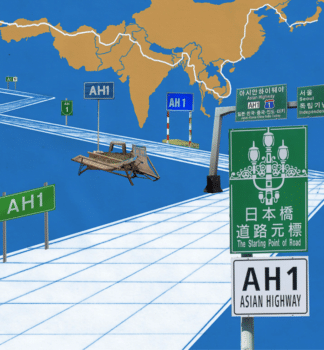
3. The Asian Highway Network was initiated by the United Nations in 1959 to connect the continent and reach Europe. After phases of progress and pauses, today this network spans 141,000 kilometres across 32 countries from Japan to Turkey, eventually connecting to European route E80.
To simplify the discussion, it is useful to periodise the post-war era into four eras: the era of modernisation theory from 1944 to 1970, the era of the New International Economic Order from 1970 to 1979, the era of globalisation and neoliberalism from 1979 to 2008, and the transitional era in which we have lived since the 2007—2008 financial crisis of Western markets.
1. The Era of Modernisation Theory (1944—1970)
The Bretton Woods Conference in 1944 acknowledged certain limitations of the international architecture’s management of the world economy, but it did not identify any major problems with the neocolonial structure of the economy. There was the start of a conversation about raising funds to rebuild Europe after World War II, but there was no comparable conversation about the need to ‘reconstruct’ the newly free nations in Africa, Asia, and Latin America following the pillage of colonialism. Through Bretton Woods, it became clear that the structure of the world economy would not be revised and that apart from the rebuilding of U.S.-occupied Japan and South Korea, there would be no transfer of funds at concessionary rates to the post-colonial nations (only to Western Europe through the massive infusion of funds provided via the Marshall Plan). Both of these features shaped the work of the IMF and the World Bank in the years to follow.
In 1960, W.W. Rostow published The Stages of Economic Growth: A Non-Communist Manifesto, whose title immediately signalled the book—and the author’s — anti-communist and anti-Marxist orientation. Rostow, who helped shape the Marshall Plan and later served as national security adviser to U.S. President Lyndon B. Johnson, proposed a model that outlined several stages of social development. According to Rostow, these stages began with a ‘traditional society’ which would then be engineered to enter a ‘take off’ in economic growth and a ‘drive to maturity’ through industrialisation and the emergence of a national elite, whose leadership would finally transform the formerly ‘traditional society’ into a ‘high mass-consumption society’. According to this model, most of the Third World was simply stuck in the ‘traditional society’ stage, an ahistorical conception that completely neglected the fact that societies in Africa, Asia, and Latin America had been impoverished by colonial theft. Any problems in the ‘traditional society’ were internal (or cultural), whereas all external problems (such as the uneven international division of labour, a product of colonialism) had to be dismissed. For Rostow, ensuring that the newly independent nations ‘resist[ed] the blandishments and temptations of Communism’ was ‘the most important single item on the Western agenda’. To this end, Rostow advocated for the West to use development aid to deter governments in the Third World from socialist alternatives, induce them to forgo criticism of the neocolonial order, and guide their industrialisation to sectors that were not of commercial interest to multinational corporations domiciled in the West.
The United Nations adopted the modernisation theory approach during the first Development Decade (1960—1970), avoiding any mention of the neocolonial structure of the world economy while urging member states to ‘mobilise and to sustain support’ so that the developing countries could ‘accelerate progress towards self-sustaining growth of the economy of individual nations and their social advancement so as to attain in each under-developed country a substantial increase in the rate of growth’.3 The general idea was that formerly colonised countries would borrow from multilateral agencies and private capital markets to build the infrastructure and industry needed for modernisation and that the exports generated would pay off the debt incurred. This argument of modernisation theorists was confronted by the United Nations Economic Commissions for Latin America (ECLA) and Asia and the Far East (ECAFE), both of which made the point developed by ECLA’s Executive Secretary Raúl Prebisch in 1950 that the terms of trade for primary goods exporters in relation to manufactured goods exporters tended to decline over time, impoverishing the former.4 In other words, the economic commissions in Latin America and Asia made it clear from the first months of the 1950s that the modernisation paradigm being sold by international financial institutions—led by the United States and Europe—would not succeed in provoking a ‘take off’ in the countries of the Third World. Prebisch’s view did make certain headway amongst bourgeois economic theorists as well as a range of development economists who put forward ideas such as the ‘low-income-level trap’, although—unlike the ECLA and ECAFE economists—neither of these groups challenged the underlying neocolonial structure of the world economy (including the reliance upon export of raw materials).5
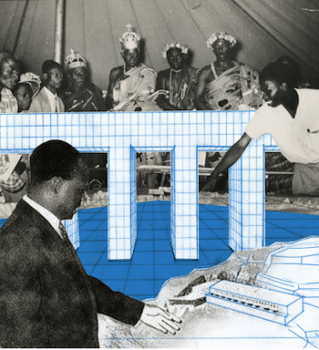
4. The Akosombo Dam in the Volta River, inaugurated in 1965 during Kwame Nkrumah’s presidency, was the largest single development investment in Ghana’s history at the time. The planning of the project involved broad public consultation, including with different representatives of Traditional Councils.
These critiques of modernisation theory from the Third World resulted in the establishment of the UN Conference on Trade and Development (UNCTAD) in 1964, with Prebisch serving as its founding secretary-general. The work of Prebisch and UNCTAD, as well as the emergence of a new literature against the neocolonial global architecture (notably, Kwame Nkrumah’s Neo-Colonialism: The Last Stage of Imperialism, 1965), provoked serious discussion in the capitals of the Third World about the limitations of modernisation theory’s conception of development and in the academies of the Third World about its theoretical shallowness. Academic debates about the absence of social history in modernisation theory and its failure to appreciate the theft of wealth from the colonies, along with the influence of Prebisch’s ‘terms of trade’ argument, led to the creation of the dependency theory school of thought (which had both Marxist and developmentalist sections).6 It was this recognition of modernisation theory’s inadequacies amongst Third World political leaders that began a decade-long discussion about the external factors that hindered the development of the formerly colonised countries, which in turn led to the drafting of a programme called the New International Economic Order. The intellectual and political work against modernisation theory produced a serious challenge to the neocolonial paradigm, not only within university classrooms and the offices of international agencies, but also in the headquarters of the United Nations in New York.
2. The Era of the New International Economic Order (1970—1979)
Within UNCTAD, Third World countries took their own experiences with the limitations of modernisation theory and combined them with the insights they gleaned from dependency theory. This process within UNCTAD led to the publication of numerous reports and studies that emphasised the external factors that structured the Third World countries’ failure to overcome their internal challenges. These external factors included the paucity of financing available at concessionary rates to build the depleted infrastructure in these countries, the West’s unwillingness to transfer technology and science to the Third World or to allow a trade regime (with tariffs and subsidies) that would permit the industrialisation and diversification of the Third World countries’ often one-commodity economies, and the failure amongst Third World states to break their economic umbilical cord with their former colonial powers and substitute this dependent relationship with greater cooperation amongst themselves. No significant or lasting internal change—such as building technical capacity in their population through universal education, constructing state institutions committed to social equality rather than the maintenance of law and order, or developing norms in public life to fight against corruption—would be possible if the external neocolonial environment continued to deplete the resources of the Third World states.
Conversations at the UNCTAD meetings and in the Non-Aligned Movement (established in 1961) began to draw up an agenda for the construction of what became known as the New International Economic Order (NIEO). In October 1970, the UN General Assembly passed resolution 2626 calling for the Second United Nations Development Decade. Notably, as a result of this pressure from the Third World, the resolution called upon UN member states to ‘pledge themselves, individually and collectively, to pursue policies designed to create a more just and rational world economic and social order in which equality of opportunities should be as much a prerogative of nations as of individuals within a nation’. The resolution declared that ‘qualitative and structural changes’ are necessary in order for ‘existing disparities—regional, sectoral and social—[to] be substantially reduced’.7 This UN resolution set the stage for the third UNCTAD session, held in Santiago (Chile) in April—May 1972, where UNCTAD Secretary-General Manuel Pérez Guerrero pointed out that Third World countries ‘rightfully want a voice in world monetary decisions which otherwise could be very detrimental to them. And since the greatest part of their foreign income comes from the sale of their primary products, it is obvious that they consider this to be the most important field where action would bring immediate and substantial results’.8 These two issues—decision-making in world monetary policy and control over the prices of primary products—formed two important pillars of the NIEO.
On 1 May 1974, the UN General Assembly passed the NIEO, a comprehensive set of economic proposals that were the fruit of this decades-long debate over the structural factors that had been inherited from colonialism, the importance of transcending these barriers, and the paralysis engendered by the borrowing-debt-austerity trap set by the Bretton Woods institutions and their modernisation theory, which did not produce the ‘take off’ promised by Rostow. The principles of the NIEO remain vital in our own time; a few of them merit reflection here:
- ‘Sovereign equality of States, … [with] non-interference in the internal affairs of other States, … [their] full and effective participation on the basis of equality of all countries in solving world economic problems’, and the right to adopt their own economic and social systems;
- ‘Full permanent sovereignty of every State over its natural resources and all economic activities’ necessary for development, as well as regulation of transnational corporations;
- A ‘just and equitable relationship between the prices of raw materials… [and] other goods exported by developing countries, and the prices of raw materials’ and other goods exported by the developed countries;
- Strengthening bilateral and multilateral international assistance to promote industrialisation in developing countries, in particular by providing sufficient financial resources and opportunities for the transfer of appropriate techniques and technologies.9
A few months later, in October 1974 in Cocoyoc (Mexico), UNCTAD and the UN Environment Programme gathered for a symposium where they put forward a new conception of development, one which underpinned the NIEO project:
Our first concern is to redefine the whole purpose of development. This should not be to develop things but to develop man. Human beings have basic needs: food, shelter, clothing, health, education. Any process of growth that does not lead to their fulfilment—or, even worse, disrupts them—is a travesty of the idea of development.10
This inspirational and hopeful vision of humanity and the future could not establish itself due to several adverse and complementary processes, including:
- A political attack by the newly established Group of Seven (G7) countries (Canada, France, Italy, Japan, the United Kingdom, the United States, and West Germany), created in 1975 to push back against the challenge presented by the NIEO. The G7, which emerged in the context of Third World oil-producing countries building a cartel the prior decade known as the Organisation of Petroleum Exporting Countries (OPEC), flexed their muscles to produce the Oil Shock of 1973. OPEC was the first of several primary commodity cartels to give the countries that produced these products power over price setting against multinational corporations, which otherwise set the prices against the countries that produced and exported these goods.
- An economic attack on Third World countries through the Volcker Shock (1979—1987), when the U.S. sharply raised interest rates that spurred on the permanent Third World debt crisis.
- The IMF and World Bank’s use of the Third World debt crisis, requiring countries that needed loans to cover their short-term balance-of-payments problems to conduct extensive ‘structural adjustment’ policies as a condition to receive financing. Structural adjustment policies imposed severe funding cuts to social welfare programmes while promoting a general austerity regime, often ensnaring Third World countries in a borrowing-debt-austerity trap. This weakened these governments’ development agendas and political power on the global stage.
- The disarticulation of the Fordist mode of production and factory system and the creation of fragmented, global production chains, a process enabled by new developments in communications and transportation technologies as well as by new laws on intellectual property rights established in the final round of the General Agreement on Trade and Tariffs from 1986 to 1994.11
- The assault by agribusiness on small landholders and peasants in developing countries (furthered by the entrenched subsidies given to agribusinesses in advanced countries) and the emergence of the subcontracted global supply chain, which weakened the working class and peasantry in the global class struggle and posed new and significant obstacles for trade union organising. Furthermore, this meant that developmental strategies such as nationalisation no longer operated as before.
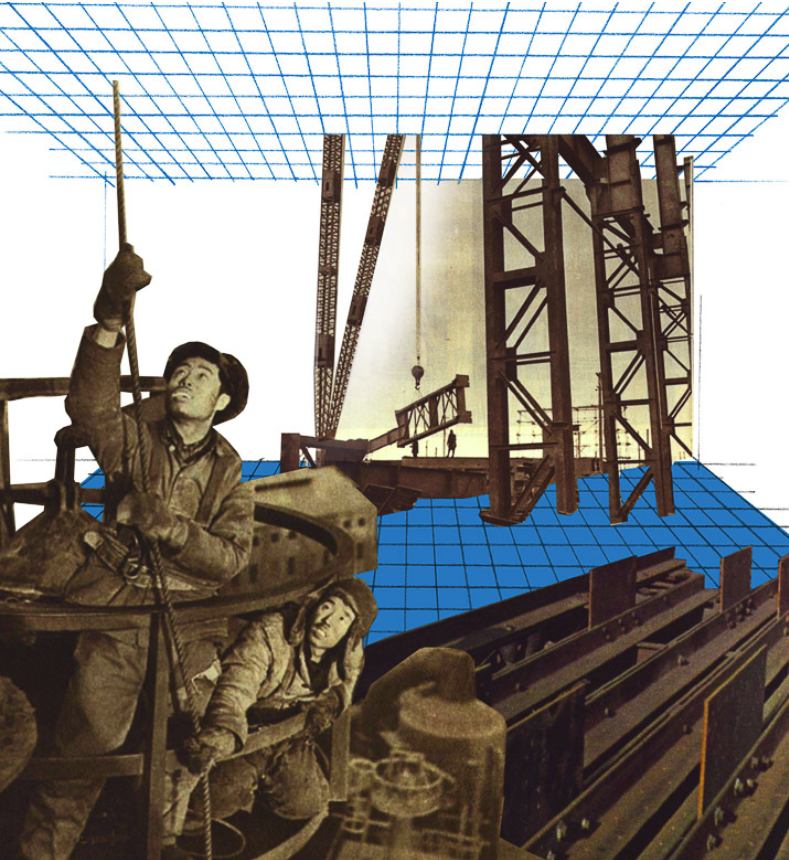
5. Anshan Iron and Steel Company, one of China’s largest state enterprises, was renovated and expanded as one of the 156 construction projects in the country that received significant aid and expertise from the Soviet Union. It was also part of China’s first Five-Year Plan (1953—1957).
These developments undermined the progressive forces in the Third World and led to the gradual marginalisation of the NIEO debate, setting the stage for neoliberal theory and policy’s ascension to dominance.
3. The Era of Globalisation and Neoliberalism (1979—2008)
In December 1980, the UN General Assembly passed a resolution to establish the Third United Nations Development Decade. This resolution reaffirmed that the UN member states would ‘solemnly’ work to ‘establish a new international economic order’ and stated that the ‘ultimate aim of development is the constant improvement of the well-being of the entire population on the basis of its full participation in the process of development and a fair distribution of the benefits therefrom’.12 But the deterioration of the development agenda had already begun to show itself. New terms entered the vocabulary of this UN resolution, such as ‘trade liberalisation’ and ‘structural adjustment’, which had been introduced into global discussions by the IMF. For instance, the resolution noted: ‘All countries commit themselves to an open and expanding trade system to further progress in the liberalisation of trade and to the promotion of structural adjustment which will facilitate the realisation of the dynamic pattern of comparative advantage’.13 Despite the token nod to the NIEO, it was clear that, under pressure from rising debt rates (which would dramatically explode when Mexico declared bankruptcy in August 1982), more and more Third World states had begun to adopt the monetarist ideas that had made their appearance in U.S. economic departments, inspired by the work of Milton Friedman. Under pressure from the U.S. government, leadership of the main international financial institutions was turned over to these monetarists, who opposed the NIEO and began to promote the view that development was not to frame the global debates but was a problem of individual governments. For instance, William Hood, who worked briefly at the University of Chicago, took over as the chief economist at the IMF in 1979, while Anne Krueger, a proponent of Friedman’s neoliberalism, became the chief economist at the World Bank in 1982. A decade later, development economist John Toye called this erosion of the NIEO dynamic a ‘counter-revolution’.14
Debates in development theory grew silent as the balance of forces became averse to any suggestions for change in the neocolonial structures of the world economy. Faced with the massive debt overhang, countries in the Global South—particularly in Africa and Latin America—hastened to cut government expenditure, reduce subsidies, liberalise domestic markets, and restrain wages, a basket of policies that deflated their economies and led to what is known as the lost decade of development. Under pressure to move from import substitution to export promotion, many of these countries simply began to export more and more of their primary commodities or else liberalise their economies to allow multinational corporations to set up links in the global commodity chain of production within their borders with minimum regulatory control.15 World Bank and IMF doctrines began to shape the development debates, with Marxist and national liberation voices restricted to the margins as critics rather than being leaders in the discussions. International financial institutions and the United Nations made some striking interventions: for instance, the World Bank noted—for the first time—that while poverty could be lessened, the abolition of poverty was no longer going to be possible, while in December 1990, the Fourth United Nations Development Decade resolution emphasised the need ‘to facilitate open exchange and flexible responses to the changing world economy’ in the context of accelerating globalisation.16 Within the year, the USSR collapsed and the forces of neoliberal globalisation marched forward without restraint.
Matters were grave. The UN’s 1993 Report on the World Social Situation, commissioned by the UN General Assembly to assess the implementation of the Declaration on Social Progress and Development (1989), noted that, although the goals of the declaration had not changed, ‘the priorities, approaches, and emphases have been reviewed and renewed, as the understanding of the forces behind development have deepened. Thus, emphasis is on assisting the recipient countries to strengthen their institutional capacity to sustain the development process’.17 What the UN was now saying—in accordance with the views of the World Bank and the IMF—was that external factors would not be the focus when it came to matters of Third World development. Rather, the emphasis would be on internal reforms, such as ending subsidy-tariff regimes (trade liberalisation) and removing protections for workers (labour market liberalisation). The agenda for the next period would be to tackle corruption, promote ‘good governance’, and emphasise human rights in political—but not labour—terms. The international financial organisations focused on the advances made by several North-East Asian economies—such as the Four Asian Tigers (Hong Kong, Singapore, South Korea, and Taiwan)—to argue that endogenous growth was possible throughout the Third World either through the export-promotion model or by emulating the ‘Asian values’ that were claimed to have enabled these countries to ‘take off’ despite adverse external situations.18 The factors that provided an advantage to the growth of these economies—including their small size, the long periods of political dictatorship that squeezed labour rights, the lower military spending required by being under the U.S. imperialist umbrella, the more favourable trade and investment terms granted to them by the U.S., and the extensive state economic intervention that they were permitted—were not addressed in these texts, which were largely written as critiques of the NIEO.19 Instead, the ‘East Asian Miracle’ was used as a weapon to induce other states in the Global South to liberalise their labour markets and cross-border trade procedures.20

6. The Games of New Emerging Forces (GANEFO) were hosted in Jakarta, Indonesia in 1963. Under President Sukarno’s leadership, GANEFO was organised as a boycott to the Olympic Games and hosted athletes of newly independent and socialist states.
In this period, development discussions focused not on the NIEO or on the neocolonial structures of the world economy but on the quantification of basic needs and the obligation upon states—despite their lack of resources—to meet certain targets. This was established in the Millennium Declaration (2000) and in the 2030 Agenda for Sustainable Development (2015), which, respectively, established the eight Millennium Development Goals (MDGs) and the seventeen Sustainable Development Goals (SDGs), all of them based on the technical work done by the UN Development Programme’s human development indicators project (1990) and by the Organisation for Economic Cooperation and Development’s goals of international development (1996). None of these goals considered the external factors that suppress development possibilities (such as the permanent debt crisis), entirely ignoring the IMF’s structural adjustment policies and borrowing-debt-austerity trap and neglecting to propose a sustainable way to build the social wealth necessary to meet these milestones. As the World Bank put it in 1996, planning was obsolete, and the governments of the Global South had to put their faith in markets to raise the growth rates and public finances needed to realise the MDGs and SDGs.21 Over the course of recent decades, few countries in the Global South have been able to meet even a handful of the SDGs. The financial crisis of 2007—2008, the pandemic at its height in 2020—2022, and the war in Ukraine have only resulted in further retreats from these goals.
4. The Era of Transition Over the Five Controls (2007 to Present)
The 2007—2008 crisis of Western financial markets, triggered by a bank run due to the failure of the mortgage market in the United States, dented the confidence of the neoliberal agenda. Countries in the Global South—notably large developing countries, including China—began to reconsider their reliance upon the United States, which had been the buyer of last resort. This realisation of the fundamental weakness of the U.S. domestic market and the vulnerabilities in Western financial networks led to several practical shifts in the Global South, two of which are particularly important to highlight:
- The large developing states—Brazil, China, India, Russia, and South Africa—came together to form the BRICS bloc in 2009, and, along with Indonesia, Mexico, Nigeria, and others, began to contemplate the revival of the South-South development agenda. These developments carried the promise of the future creation of a new trade and development system, with the New Development Bank as its anchor, and a new financial and monetary system, including a Southern wire transfer system. An additional impetus for these developments was Washington’s aggressive sanctions policy, which shut dozens of countries out of the Western-dominated financial system. This revived South-South agenda resulted in a surge of new literature, mostly comprised of technical accounts on how to build the infrastructure for this kind of development. There has—as yet—not been a proper development theory that has emerged out of the South-South agenda. The United Nations established the Office for South-South Cooperation in 2013, whose mandate is merely to advance the work of the SDGs. There is no deeper assessment of the need to build national or regional plans for development, nor is there any conceptual clarity about what South-South cooperation means beyond an increase in South-South trade.
- The Chinese development paradigm changed dramatically, building upon advances in the country’s industrial production (particularly in artificial intelligence, biotechnology, green technology, high-speed rail, quantum computing, robotics, and telecommunications). China’s government moved to increase the domestic market (through the eradication of absolute poverty and the ‘Go West’ development strategy for its western provinces) and to build new networks for trade and development through the One Belt, One Road policy, which began in 2013 and was renamed the Belt and Road Initiative (BRI) in 2016.22 The rapid expansion of China’s trade policy and its emphasis on the creation of regional and multilateral organisations, including the Forum on China-Africa Cooperation (founded in 2000) and the Shanghai Cooperation Organisation (founded in 2001), resulted in the creation of the largest trade bloc in the world, the Regional Comprehensive Economic Partnership, which went into force in 2022. China is now the leading trading partner with most countries in the Global South. Theories of this expansion and its impact on the Global South are being developed, although the literature up to this point is largely descriptive.23
Rather than engage the rapid changes in global trade and development or grapple with the actual historical processes underlying them, the United States and its allies are pursuing a political and military agenda to reverse them, which has come to be called the New Cold War.24 Led by Washington, this agenda is aggressively attempting to block or delay Chinese economic advances and new South-South programmes through hostile bloc-style politics, forced economic decoupling, and rampant militarisation, which has destabilised the world. It is as if the major Western countries have surrendered to the fact that they cannot compete with China’s economic growth and with the South-South projects of trade and development. Because of its failure to compete economically, the West has tried to derail these advances by resorting to its superior military prowess. Any development theory of the present must engage with this New Cold War, which is undermining all efforts to address the compelling problems of the Global South.
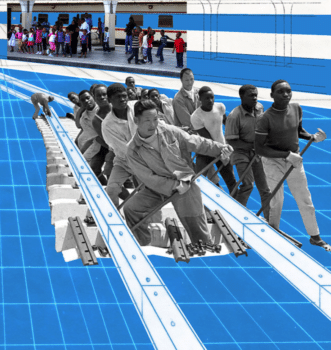
7. The TAZARA Railway (or Uhuru Railway), connecting the East African countries of Tanzania and Zambia, was funded by China and constructed by Chinese and African workers. The railway was completed in 1975 under the presidencies of Julius Nyerere (Tanzania), Kenneth Kaunda (Zambia), and Mao Zedong (China) and has become an important lifeline for landlocked Zambia to bypass white-led colonial governments and access trading ports via Tanzania.
A range of development theories assert themselves at present, but few of them capture the totality and gravity of our contemporary reality. Scholars of the ‘post-development’ school—including Arturo Escobar, Gustavo Esteva, and Aram Ziai—return the debate to the local terrain, with a ‘small is beautiful’ kind of approach that ignores the scale of the problem and the constraints on states and movements to build an agenda that extends beyond the local. Such an approach, which provides key insights about small-scale development, nonetheless operates on the terrain of ‘neoliberalism from below’. Those who remain captured by the religion of neoliberalism, including IMF economists, repeat the old dogmas of structural adjustment and good governance, now shaped into a new vocabulary but with the same arguments intact. Few of those writing about development today start with the facts and build theory from them; instead, they demonstrate a religious attitude towards their theories which they impose on reality.
Starting with the facts would require an acknowledgement of the problems of debt and deindustrialisation, the reliance upon primary product exports, the reality of transfer pricing and other instruments employed by multinational corporations to squeeze the royalties from the exporting states, the difficulties of implementing new and comprehensive industrial strategies, and the need to build the technological, scientific, and bureaucratic capacities of populations in most of the world. These facts have been hard to overcome by governments in the Global South, although now—with the emergence of the new South-South institutions and China’s global initiatives—these governments have more choices than in decades past and are no longer as dependent on the Western-controlled financial and trade institutions. These new realities demand the formulation of new development theories, new assessments of the possibilities of and pathways to transcending the obstinate facts of social despair. In other words, what has been put back on the table is the necessity for national planning and regional cooperation as well as the fight to produce a better external environment for finance and trade.
The emergence of institutions of South-South cooperation and the BRI project provides new opportunities for socialist movements and governmental projects to work together to provide a new socialist development theory. This theory must engage with the ‘five controls’—as laid out by Samir Amin 25—that continue to constrain the development agenda, and it must find mechanisms to wrest control over these arenas:
- Control over natural resources. Most of the primary resources for industrial production are found in the regions of Africa, Asia, and Latin America, but control of these resources is largely exercised by Western multinational corporations, either through direct ownership or through their command over the commodity chain. Nationalisation of these resources, the main instrument of an earlier era, is no longer sufficient: because these countries or regions lack the industrial potential to harness their resources, they are forced to sell their primary resources rather than producing and then selling more developed, value-added products. What are the means available to establish control over and harness natural resources? An answer to this question will anchor any new development theory.
- Control over financial flows. Most developing countries are unable to generate the high saving rates needed to produce domestic capital accumulation. This is largely because their internal wealth is limited and unequally distributed, with the wealthy using their political power to refuse to pay taxes, instead hiding their wealth in illicit tax havens. Furthermore, multinational corporations use various opaque mechanisms (transfer pricing, for instance) to leech profits out of developing countries to the tune of trillions of dollars. Establishing control over national resources through capital controls and through better tax management and obtaining financing on concessionary terms are necessary aspects of exerting control over financial flows. Can developing countries use newly emerging sources of external finance (such as the People’s Bank of China or the New Development Bank), and not merely Western-controlled sources (such as the London Club), to exert control over financial markets?
- Control over science and technology. Due to older colonial histories and new intellectual property regimes, many countries in the Global South struggle to develop their own scientific and technological institutions. They are therefore compelled to pay large fees to obtain technologies and technical knowledge externally and often find their brightest youth departing for Western countries to study and to build their lives. In other words, the South’s lack of control over science and technology results in both the haemorrhaging of resources and brain drain. Can national and regional plans for development find mechanisms to insist upon the transfer of science and technology?
- Control over military power. The member states of the United Nations spend over $2 trillion on weapons each year, with the United States accounting for half of this amount.26 Arms dealers are largely based in a handful of countries, and the U.S. is home to a disproportionate number of them. Developing countries that have not been able to settle border disputes with their neighbours, that have internal security challenges, or that face the ever-looming external threat of regime change spend enormous amounts of their precious social wealth on weapons. It is often the case that, by buying these weapons systems, they become enmeshed in the militarised agenda of imperialism. Is it possible for a new development agenda to include an international initiative to limit military spending, to demand that the major powers not escalate conflicts, and to create and expand zones of peace?
- Control over information. In 1980, UNESCO’s MacBride Report Many Voices, One World warned about the monopoly control over information, with monopolies being largely located in Western states. Now, almost fifty years later, the concentration of power over information is even more dramatic, with a handful of Western firms—Google, Facebook (Meta), and Twitter—controlling the architecture for communication and information flows.27 No development agenda has sufficiently acknowledged the importance of both the control over information and the need for mutual education across peoples about each other’s cultural and political worlds. Could a new socialist development theory emphasise the importance of information, and could these new South-South and BRI networks craft new information channels to promote honest communication and transfers of information across the developing world?28
These questions must be on the table as we build a new theory of development in the present. Any such theory must develop a pathway for movements, states, and regions to establish their own control over these five arenas, and it must not allow itself to be dominated by external, imperialist forces.
Image Credits:
The reference images used for the collages in this dossier were edited by Tricontinental: Institute for Social Research.
1. Bibliotheca Alexandrina via Wikimedia Commons; Olaf Tausch via Wikimedia Commons (CC BY 3.0); German Federal Archives via Wikimedia Commons (CC BY-SA 3.0 DE); and JSC Gateway to Astronaut Photography of Earth via Wikimedia Commons.
2. Jean-Pierre Dalbéra (CC BY 2.0) via Flickr and Senado the Commons via Flickr (Flickr Commons).
3. Bdgzczy via Wikimedia Commons (CC0 1.0), Katorisi via Wikimedia Commons (CC BY-SA 3.0), Ktneop via Wikimedia Commons(CC0 1.0), Reinhard Kraasch via Wikimedia Commons (CC BY-SA 4.0), and Mohigan via Wikimedia Commons (CC BY-SA 3.0).
4. The National Archives UK via Wikimedia Commons (OGL v1.0) and Unknown source via Pan-African News Wire.
5. People’s Pictorial via Wikimedia Commons.
6. Indonesian Department of Information via Wikimedia Commons and Dutch National Archives via Wikimedia Commons (CC0 1.0).
7. David Brossard via Wikimedia Commons (CC BY-SA 2.0) and Unknown source via The Zambian Observer.
Notes:
- ↩ Food and Agriculture Organisation of the United Nations (FAO), Building a Common Vision for Sustainable Food and Agriculture: Principles and Approaches (Rome: FAO, 2014), https://www.fao.org/3/i3940e/i3940e.pdf.
- ↩ ‘World Hunger Statistics 2022,’ Embrace Relief, 17 February 2023, https://www.embracerelief.org/world-hunger-statistics-2022/#:~:text=According%20to%20the%20United%20Nations,majority%20living%20in%20developing%20countries.
- ↩ United Nations General Assembly, Resolution 1710 (XVI), United Nations Development Decade: A Programme for International Economic Co-operation, A/RES/16/1710, (19 December 1961), https://digitallibrary.un.org/record/204609?ln=en, 17.
- ↩ United Nations Economic Commission on Latin America, The Economic Development of Latin America and Its Principal Problems (New York: United Nations Publications, 27 April 1950).
- ↩ Harvey Leibenstein, Economic Backwardness and Economic Growth (New York: John Wiley & Sons, 1957); Irma Adelman, Theories of Economic Growth and Development, (Stanford: Stanford University Press, 1958).
- ↩ Key early texts that were critical of the dependency literature from a Marxist standpoint include Paul Baran, The Political Economy of Growth (New York: Monthly Review Press, 1957) and Celso Furtado, Formação econômica do Brasil [The Economic Growth of Brazil] (Rio de Janeiro: Fundo de Cultura, 1959).
- ↩ United Nations General Assembly, Resolution 2626 (XXV), International Development Strategy for the Second United Nations Development Decade, A/R/25/2626 (24 October 1970), http://www.un-documents.net/a25r2626.htm.
- ↩ United Nations, Proceedings of the United Nations Conference on Trade and Development, Third Session, vol. 1 (New York: United Nations, 1973), https://unctad.org/system/files/official-document/td180vol1_en.pdf, 2.
- ↩ United Nations General Assembly, Resolution 3201 (S-VI), Declaration on the Establishment of a New International Economic Order, A/RES/S-6/3201 (1 May 1974), https://digitallibrary.un.org/record/218450?ln=en.
- ↩ United Nations Environment Programme, Cocoyoc Declaration adopted by the participants in the UNEP/UNCTAD Symposium on ‘Patterns of Resource Use, Environment and Development Strategies’ held at Cocoyoc, Mexico, A/C.2/292 (8—12 October 1974), https://digitallibrary.un.org/record/838843?ln=en.
- ↩ For more on the disarticulation of production, see Tricontinental: Institute for Social Research’s working document no.1, In the Ruins of the Present (2018),https://thetricontinental.org/working-document-1/.
- ↩ United Nations General Assembly, Resolution 35/56, International Development Strategy for the Third United Nations Development Decade, A/RES/56/33 (5 December 1980), https://digitallibrary.un.org/record/18892?ln=en.
- ↩ United Nations General Assembly, Resolution 35/56, International Development Strategy for the Third United Nations Development Decade, A/RES/56/33 (5 December 1980), https://digitallibrary.un.org/record/18892?ln=en.
- ↩ John Toye, Dilemmas of Development: Reflections on the Counter-Revolution in Development Theory and Policy (Oxford: Blackwell, 1987); Vijay Prashad, The Poorer Nations: A Possible History of the Global South (London: Verso, 2012).
- ↩ In simplified terms, import substitution refers to an economic strategy that seeks to replace foreign imports with domestic production, prioritising the protection, incubation, and development of new industries. Export promotion refers to an economic strategy that prioritises the export of goods for which a country has a ‘comparative advantage’ and a greater opening up to international trade.
- ↩ World Bank, World Development Report 1990: Poverty, (New York: Oxford University Press, 1990); United Nations General Assembly, Resolution 45/199, International Development Strategy for the Fourth United Nations Development Decade, A/RES/45/199 (21 December 1990), https://digitallibrary.un.org/record/105649?ln=en, 126.
- ↩ United Nations Economic and Social Council, 1993 Report on the World Social Situation: Addendum, E/1993/50/Add.1 (12 January 1993), https://digitallibrary.un.org/record/171302?ln=en, 45.
- ↩ World Bank, The East Asian Miracle: Economic Growth and Public Policy (Washington D. C.: World Bank, 1993); Joseph Stiglitz, ‘Some Lessons of the East Asian Miracle’, World Bank Research Observer 11, no. 2 (August 1996). For more, see studies by the Korea Development Institute.
- ↩ Prabhat Patnaik, ‘Diffusion of Activities and the Terms of Trade’ in Accumulation and Stability Under Capitalism (New York: Oxford University Press, 1997).
- ↩ Adjustment in Africa: Reforms, Results, and the Road Ahead (Washington, DC: World Bank, 1994).
- ↩ World Bank, World Development Report 1996: From Plan to Market (New York: Oxford University Press, 1996), http://openknowledge.worldbank.org/handle/10986/5979;?locale-attribute=fr.
- ↩ For more on the eradication of absolute poverty in China, see Tricontinental: Social Institute for Research’s first study on socialist construction, Serve the People: The Eradication of Extreme Poverty in China, (2021), https://thetricontinental.org/studies-1-socialist-construction/.
- ↩ A useful start is provided by the seven-volume series titled Five Years of the Belt and Road Initiative, published by Chongyang Institute for Financial Studies of Renmin University of China and Foreign Language Press (2019) and New Silk Road, New Thinking, a collection published by Foreign Language Press (2018).
- ↩ Vijay Prashad, John Bellamy Foster, John Ross, and Deborah Veneziale, The United States Is Waging a New Cold War: A Socialist Perspective(Tricontinental: Institute for Social Research, Monthly Review, and No Cold War, 13 September 2022), https://thetricontinental.org/the-united-states-is-waging-a-new-cold-war-a-socialist-perspective/. For more details, see https://nocoldwar.org/.
- ↩ Samir Amin, ‘The Challenge of Globalisation’, Review of International Political Economy, vol. 3, no. 2, Summer 1996. Also see Tricontinental: Institute for Social Research’s notebook no. 1, Globalisation and Its Alternative: An Interview with Samir Amin (2018).
- ↩ Stockholm International Peace Research Institute, ‘World Military Expenditure Passes $2 Trillion for First Time,’ SIPRI, 25 April 2022, https://www.sipri.org/media/press-release/2022/world-military-expenditure-passes-2-trillion-first-time#:~:text=Military%20expenditure%20reaches%20record%20level,consecutive%20year%20that%20spending%20increased.
- ↩ Vijay Prashad, ‘History has not ended: An assessment of the Culture of Information Production’, Keynote address, East China Normal University, Shanghai, 4 May 2023.
- ↩ ALBA-TCP, Tricontinental: Institute for Social Research and Simón Bolívar Institute, A Plan to Save the Planet, 24 November 2021,

